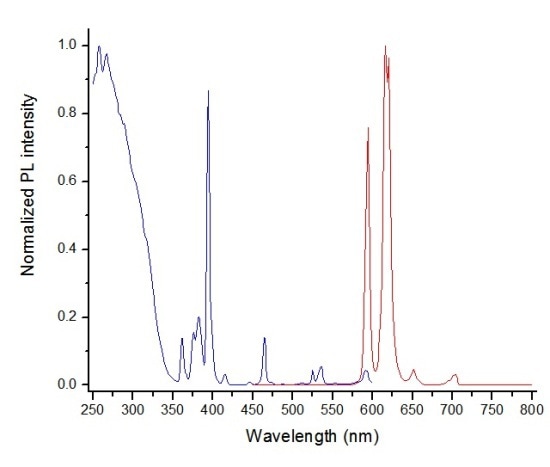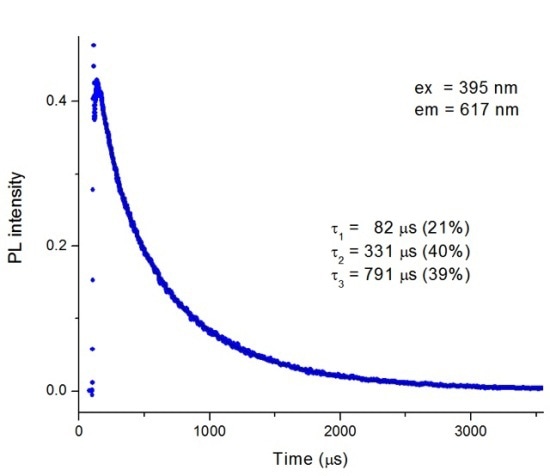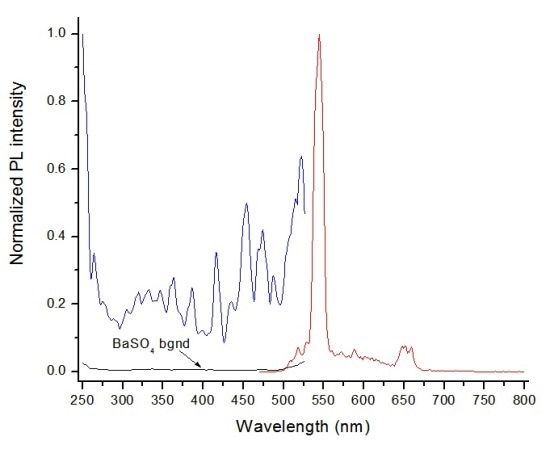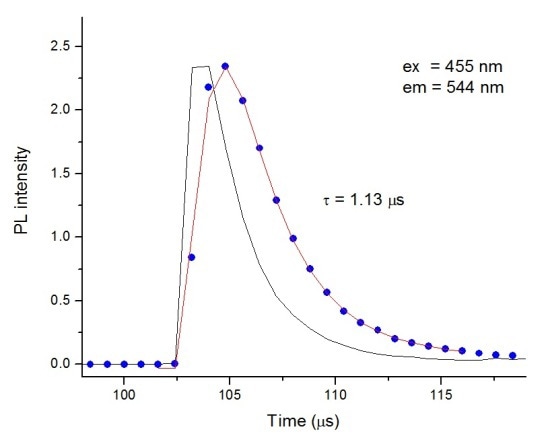Photoluminescence (PL) studies of lanthanide-doped semiconducting nano-crystals are very common in materials science. Both time-resolved and spectral luminescence properties are key parameters in quality control that involves assessment of surface contamination, size distribution, µp conversion efficiency and PL quantum yield.
The considerable research interest in lanthanide doped nano-crystals is prompted by applications in solar energy conversion devices, lasing media, LED technologies and the development of µp conversion-based luminescent labels for biomedical analyses and bio-imaging.
The Quattro Bench-Top Luminescence Spectrometer
The Quattro™ bench-top luminescence spectrometer is the right tool to fully characterize the PL properties of such materials in the UV-VIS range.
This integrated bench-top instrument offers both high sensitivity and speed. For instance, the Quattro™ can acquire real time 3-D scans of wavelength versus microsecond decay in mere seconds.
The optical design of the Quattro™ reduces stray light levels, making it suitable for measurements of highly scattering solid and powder materials. The instrument is very easy to use, has full auto-calibration and provides real time excitation and emission corrections. Figure. 1 shows the time-resolved emission and excitation PL spectra of 25% Eu3+ doped crystalline powder.

Figure 1. Time-resolved PL excitation and emission spectra of Eu3+-doped Y1.5Eu0.5Mo4Sb2O18 crystalline powder
The signal was measured with the pulsed Xe lamp set to flash at 100Hz and the spectral intensities were calculated by integrating the emission signal along the output decay curve in the time window selected between 100 and 600µs after the excitation pulse.
Setting the signal integration boundary well after the excitation pulse makes sure that the collected spectra is free of any kind of stray (scattered) light or short-lived fluorescence contamination that may be present in the sample.
Figure 2 presents a PL decay of Eu3+ doped nanocrystals. As the Quattro’s unique transient digitizer detection enables very rapid accumulation and signal averaging, the decay in Figure 2 was measured in less than 1s.
The Quattro™ can also report the measured lifetimes and amplitudes immediately after the decay is acquired without the need for an additional analysis step. This high speed provides Quattro™ users with much higher levels of lab throughput than has ever been possible before.
The measured decay is triple-exponential with lifetimes varying from 82 to 791µs, which points to the structural diversity of the nanocrystals.

Figure 2. PL decay of Eu3+-doped Y1.5Eu0.5Mo4Sb2O18 crystalline powder.
Figure 3 shows the time-resolved emission and excitation PL spectra of 20% Ho3+ doped crystalline powder. The PL decay of this sample is around 1µs, hence the signal integration was carried out by selecting a 50µs gate positioned 2µs before the onset of the excitation pulse.

Figure 3. Time-resolved PL excitation and emission spectra of Ho3+-doped Y1.6Ho0.4Mo4Sb2O18 crystalline powder
In order to make sure that the measured spectra were free of stray light or short-lived fluorescent impurities, a test excitation scan was done under the same experimental conditions using a light-scattering plate coated with BaSO4. This test experiment revealed excellent suppression of stray light despite the strongly scattering medium.

Figure 4. PL decay of Ho3+- doped Y1.6Ho0.4Mo4Sb2O18 crystalline powder. IRF trace was used for deconvolution analysis and is also shown.
Conclusion
The results show that the new Quattro™ luminescence spectrometer is an excellent choice for photoluminescence studies of lanthanide-doped nanocrystals and other solid and powder inorganic materials.
Its design ensures that the instrument features very efficient rejection of stray light and the ability to rapidly perform spectral and time-resolved characterization of these materials with a high degree of accuracy.
About Optical Building Blocks
Optical Building Blocks Corporation (OBB) designs, produces and markets state-of-the-art, proprietary electro-optical components and instrumentation used in leading research institutions around the world. Today OBB offers three main product groups of equipment; Interconnectable "Optical Building Blocks", Microscope Accessories, and Bench-Top Instruments.
At Optical Building Blocks we pride ourselves on the technical content of our extensive web page. Our goal is to provide all the information our customers and distributors could possibly need so that they can fully understand the capabilities, specifications and configurations of our components and instruments. And this on-line content is continuously updated with new information, to better achieve that goal.
You shouldn’t have to be forced to talk to a sales person just to learn about a product you are interested in. Please visit us at www.obbcorp.com to see what’s new at Optical Building Blocks and get the latest product information.

This information has been sourced, reviewed and adapted from materials provided by Optical Building Blocks.
For more information on this source, please visit Optical Building Blocks.